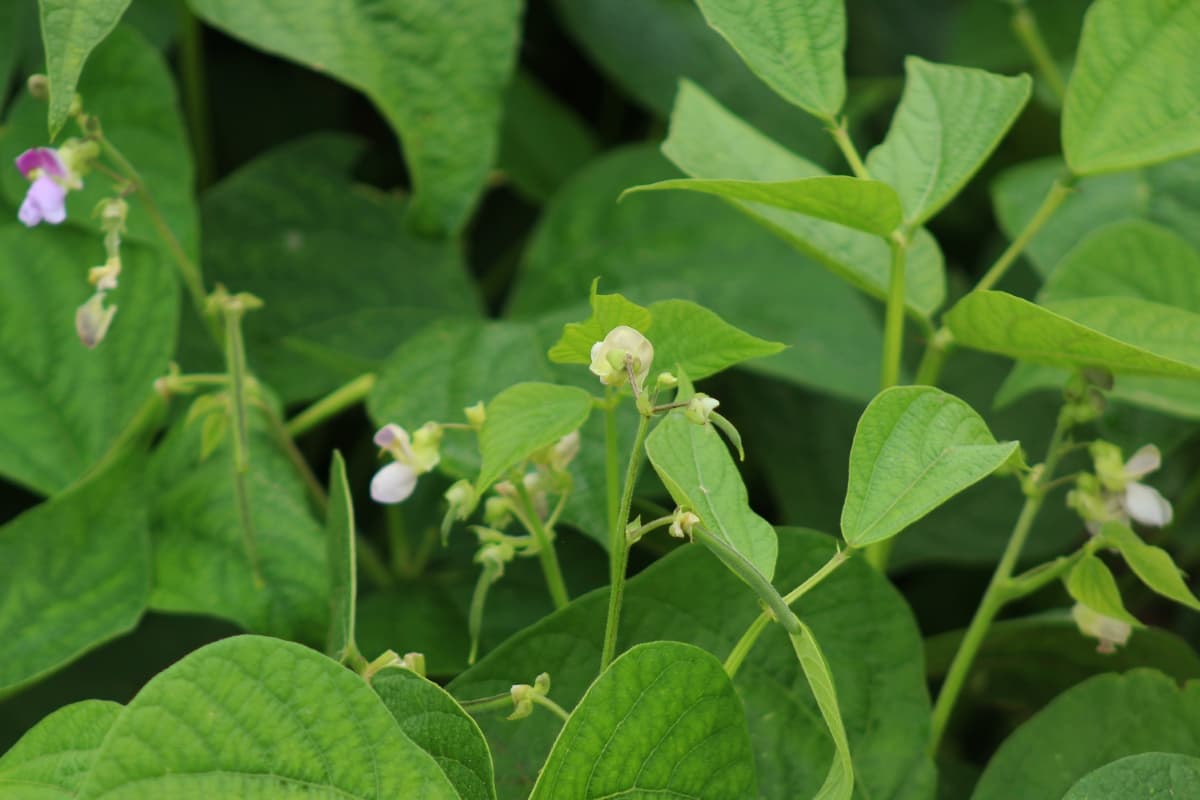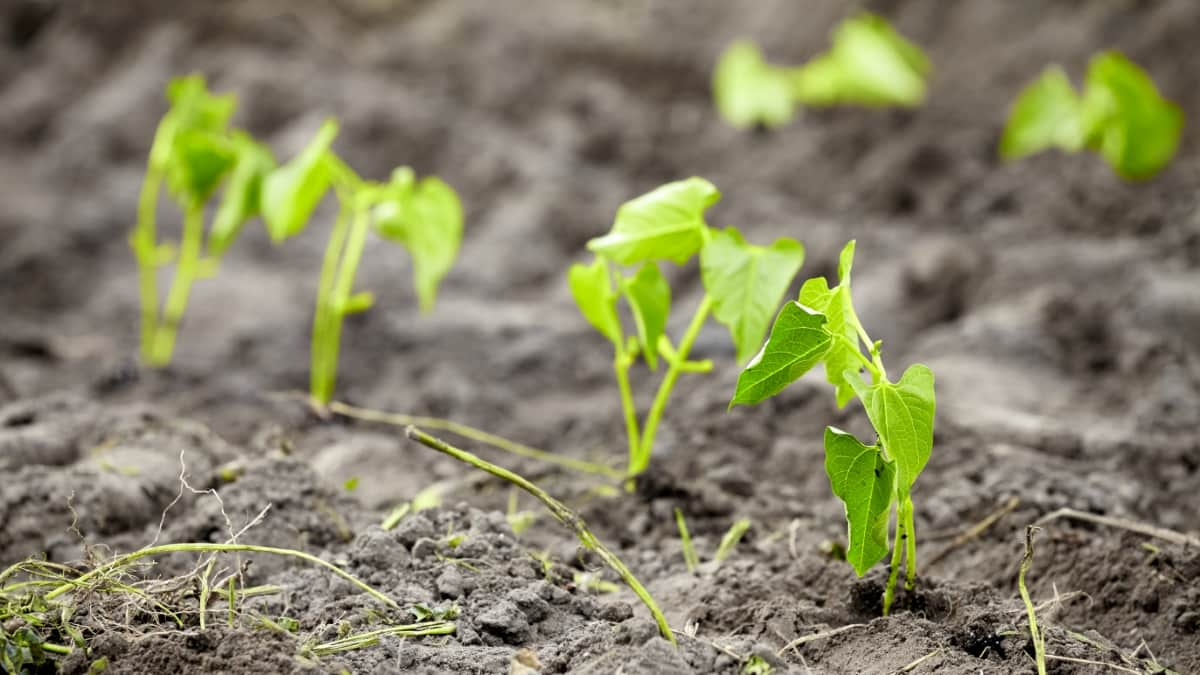In the vast universe of gardening, beans occupy a special place for their simplicity to grow and the many benefits they bring to the garden. But for the best outcomes, beans shouldn’t be grown in isolation. The concept of companion planting – the idea of growing different plant species closely together for mutual benefit – is a cornerstone of sustainable agriculture, and beans are no exception.

As you’ll see, the best companion plants for beans can help deter pests, improve soil fertility, and enhance pollination, among other advantages. But some are bad companions for beans; there are also some that you should not plant next to beans. With all these factors in mind, we will guide you through the key companion plants for beans and their benefits to growth and yield.
Benefits of Companion Plants for Beans in the Garden
Companion planting can bring a wealth of benefits to your bean plants and the garden as a whole. Some of these benefits are direct, such as deterring pests or enhancing growth, while others are more subtle, like improving soil health or attracting pollinators.
Companion plants for beans have a synergistic relationship with these legumes, providing them with protection, nutrition, and a more balanced ecosystem in which to grow. Beans companion plants benefits also extend to the other plants, as beans enrich the soil with nitrogen, a nutrient vital to plant growth. Growing the right companion plants can maximize these benefits, resulting in a more productive and healthy garden.
Best Companion Plants for Beans to Deter Pests
Beans, like any other plants, are susceptible to various pests. But some plants, when grown alongside beans, can deter these unwanted visitors. Companion plants for beans like marigolds, nasturtiums, and rosemary have proven to be particularly effective at warding off beetles and aphids, thanks to the strong scents they emit. Other herbs, such as sage and thyme, can keep pests at bay. These companion plants can help protect your beans from damage and reduce the need for chemical pesticides, promoting a healthier, more sustainable garden.
Beans Companion Plants for Improved Pollination
Pollination is a key part of any plant’s life cycle, and companion plants can be crucial in attracting the pollinators that beans need. Plants like borage and coriander are known to attract bees, which can help improve bean yields. Companion flowers for beans like sunflowers, poppies, and zinnias add visual appeal to your garden and attract a range of pollinators. Choosing the right companion plants can create a garden that buzzes with beneficial insects, boosting pollination and improving your bean harvest.
Companion Plants for Beans in Containers
Growing beans in containers can present unique challenges, but choosing the right companion plants can make it a success. Smaller herbs such as parsley, thyme, or basil are excellent companions for beans in containers, as they have similar needs in light and water without competing too much for root space.
Companion vegetables for beans, like lettuce and radishes, can also work well in containers, providing a nice mix of tastes for home-cooked meals. Remember, though, that some larger plants are not suitable as companions for beans in containers as they may outcompete them for nutrients and space.
Companion Herbs for Beans in Organic Gardening
Using natural methods to deter pests and promote growth is paramount in organic gardening. Companion herbs for beans can play a critical role in this, with their strong scents and essential oils helping to deter pests and their roots often bringing up nutrients from deep in the soil, which benefits neighboring beans.
In case you missed it: Fava Beans from Seed to Plate: How to Grow Broad Beans at Home from Seed in Pots/Containers

Herbs such as rosemary, sage, and mint are excellent choices, as they have pest-deterring properties and can tolerate the same conditions as beans. The beneficial interactions between beans and their companion herbs can help you maintain a productive, organic garden without artificial inputs.
Flowering Companion Plants for Beans to Attract Beneficial Insects
Attracting beneficial insects is a key benefit of using flowering companion plants for beans. Beneficial insects not only aid in pollination but also help control pest populations. Flowers such as marigolds, nasturtiums, and cosmos can attract a range of beneficial insects, including ladybugs, lacewings, and hoverflies. These insects prey on common garden pests, helping to keep your beans healthy. Plus, these flowering companions’ additional burst of color can make your garden even more visually pleasing.
Companion Vegetables for Beans in Raised Beds
Beans can thrive in raised bed gardens, and choosing the right companion vegetables can improve the experience. Companion vegetables for beans, such as corn, squash, and cucumbers, work particularly well in raised beds. This trio, often referred to as the “Three Sisters,” has been grown together by Indigenous peoples of North America for centuries due to the benefits each plant brings to the others. Corn acts as a natural trellis for beans, which enrich the soil with nitrogen, while the sizeable squash leaves effectively retain soil moisture and prevent weed growth.
Companion Plants for Beans to Improve Soil Fertility
Beans are well-known for their ability to fix nitrogen from the atmosphere, enriching the soil for other plants. In turn, companion plants can also contribute to soil health. Plants such as buckwheat can help improve soil structure and add other vital nutrients. Additionally, clover cover crops safeguard soil against erosion and enhance organic matter content. Choosing the right companion plants for your beans can thus lead to healthier soil and better overall plant growth.
Companion Plants Chart for Beans in the Garden
A companion plant chart for beans can be a handy guide when planning your garden. The chart should include the best companions for beans, such as corn, marigolds, and rosemary, and plants that should not be planted next to beans, like onions and garlic. For each plant, the chart should outline its main benefits to beans, such as pest deterrence, pollination aid, or soil improvement. With such a chart, you can make informed decisions about what grows well with beans, maximizing your garden’s productivity while minimizing potential problems.
In case you missed it: 10 Common Problems With Green Beans Plants: Treatment and Solutions

Conclusion
Companion planting is a tried and tested strategy used for generations to enhance crop yield and garden vitality. Regarding beans, companion planting can help deter pests, improve pollination, enhance soil fertility, and much more. But as with anything in gardening, it’s essential to approach it with an open mind and a willingness to learn from experience. By considering the suggestions and guidelines provided here, you’ll be well on your way to reaping the benefits of the bean companion plants, enhancing your garden’s yield and overall health and harmony.
- Feed Your Flock for Less: Top 10 Tips to Save on Chicken Feed
- Ultimate Guide to Ossabaw Island Hog: Breeding, Raising, Diet, and Care
- Hatching Answers: The Top 10 Reasons Your Chickens Aren’t Laying Eggs
- Eggs and Economics: Breaking Down the Cost of Raising Backyard Chickens
- Defend Your Greens: Proven Methods to Keep Iguanas Out of Your Garden
- Ultimate Guide to Cinnamon Queen Chicken: A Comprehensive Guide for Beginners
- Ultimate Guide to California Tan Chicken: Breeding, Raising, Diet, Egg-Production and Care
- Ultimate Guide to Marsh Daisy Chicken: Breeding, Raising, Diet, and Care
- 10 Types of Chicken Farming Businesses You Can Start for Profits